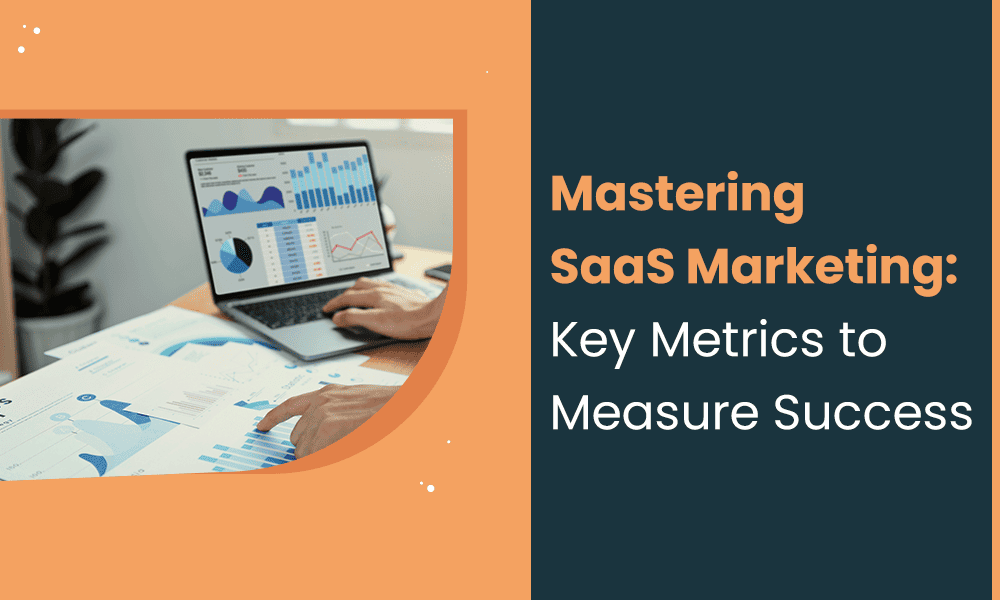Software as a Service (SaaS) has become the go-to solution for organizations and businesses looking for flexibility, affordability, diversity, and accessibility of software solutions to scale their businesses.
Data from ReportLinker shows that the SaaS industry is forecasted to grow to $1.24 trillion by 2027 at a Compound Annual Growth Rate (CAGR) of 18% per year.
In this in-depth blog post, you’ll discover the SaaS marketing metrics that are gold, and not just iron pyrite. Also, we’ll delve into the reasons they are essential to track, how to calculate them, and some proven tips to improve your performance.
Table of Contents
What Are SaaS Marketing Metrics?
SaaS (software as a service) marketing metrics are key metrics used to measure the overall performance of a SaaS business.
Ideally, now and then, you get routine health checks. To know what’s happening with your health and ways you can be healthier. That’s essentially what happens when you track and analyze your SaaS business performance periodically.
In addition, marketing KPIs help you understand key growth drivers such as Customer Acquisition Cost (CAC) and Monthly Recurring Revenue (MRR). So data-driven decisions can be made in product development to optimize performance and increase the revenue of your SaaS business.
Read also: SaaS Go-To-Market Strategy Framework & Proven Examples
Six Reasons You Should Track Your SaaS Marketing Performance
When it comes to tracking your SaaS marketing performance, there are no downsides. Generally, data-driven insights from tracking your SaaS business performance are critical for making better decisions to grow your business and increase revenue.
In addition, it is necessary to track your SaaS company’s marketing performance for the following reasons:
- Get data-driven insight into your customer behavior: By tracking and analyzing SaaS marketing metrics, you get valuable insight into SaaS customer behavior. For example, tracking your Net Promoter Score (NPS) gives you insight into customer loyalty and satisfaction. This helps you make better decisions to improve your customer retention marketing strategies.
- Optimize conversion rates: Tracking metrics such as Lead-To-Customer Rate can help you understand your current conversion rate. With this insight, you can identify areas to improve for better conversions.
- Forecast revenue: SaaS businesses typically rely on recurring revenue for sustainability. Metrics such as Monthly Recurring Revenue (MRR) can help you forecast and track revenue growth.
- Track the effectiveness of your marketing channels: When it comes to marketing, you don’t have to make speculations or assumptions about the effectiveness of your marketing campaign. Monitoring metrics such as Marketing Sourced Revenue (MSR) shows you the performance of your SaaS marketing channels so they can be better optimized.
- Understand the financial health of your SaaS business: Understanding the financial health of your SaaS business is crucial for sustainability. By tracking metrics such as Annual Recurring Revenue (ARR), you can understand the health of your various revenue streams. This is important to drive sustainable growth.
- Identify business growth trends: By monitoring metrics over time, you identify SaaS business trends that can be valuable in making future predictions for planning and scaling purposes.
SaaS business is different from product-led businesses. As such, the survival of a SaaS business depends largely on understanding its performance. So your SaaS marketing team can strategize on ways to improve them.
Read also: The Most Effective SaaS Marketing Strategies
Top 21 Key SaaS Marketing Metrics to Monitor
To track growth rates and improve SaaS sales, it’s essential to keep a tab on the following SaaS marketing metrics. We’ve divided the 21 metrics into four categories for ease of readability.
Metrics to track SaaS customer success
- Net Promoter Score (NPS)
- Customer Engagement
- Customer Health
Metrics to track SaaS sales performance
- Marketing Qualified Lead (MQL)
- Marketing Sales Lead (SQL)
- Lead Velocity Rate (LVR)
- Monthly Recurring Revenue (MRR)
Metrics to track SaaS revenue and finance
- LTV:CAC Ratio
- Revenue Churn
- Churn Rate
- Annual Contract Value
- Marketing Sourced Revenue (MSR)
Metrics to track SaaS marketing performance
- Unique Visitors
- Number of Free Trial Sign-Ups
- Activations
- Lead-To-Customer Rate
- Referral Traffic
- Landing Page Conversion Rate
- Signup to paid conversion (12-month period)
- Time Spent on Site
- Bounce Rate
SaaS Business Model Working Explained
1. Net Promoter Score (NPS)
Net Promoter Score is a data-driven evaluation of customer satisfaction. It is based on how likely they are to recommend your SaaS product to others. NPS measures customer satisfaction on a scale between 0 (the most negative) and 10 (the most positive).
Why Net Promoter Score is an important SaaS metric to track
Every business needs a loyal customer base. If you’re a SaaS company, that’s double true.
Net Promoter Score helps you get a first-hand insight into your product and offering from your customers’ perspective.
With this understanding of customer satisfaction and loyalty. You can identify customer patterns and make better decisions to retain and acquire new customers for your SaaS business.
Here’s how you can calculate your Net Promoter Score
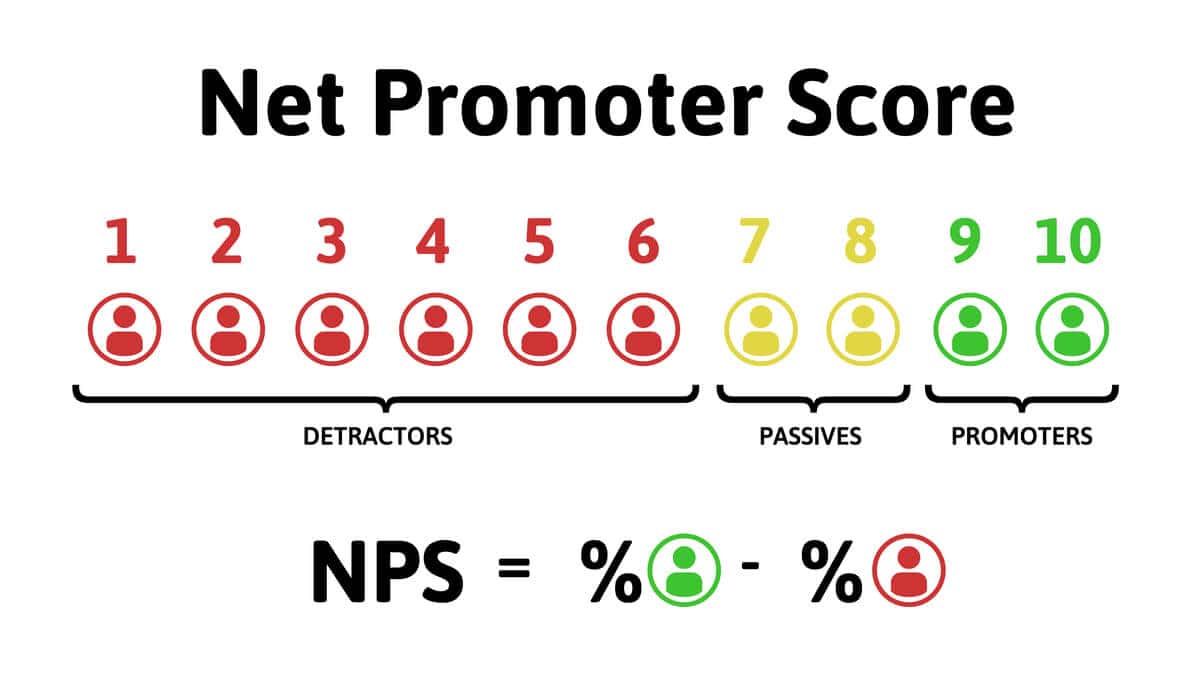
To track your NPS, take a survey on your website. Ask customers to rate their experience on a scale of 0-10. You can also ask them specifically if they would recommend your product to their friends or family.
Group the results from the survey as follows:
- Promoters: These are enthusiastic customers who respond with a 9-10. They make up your loyal customer base and are most willing to recommend your product to others.
- Passives: These are indifferent customers who respond with a score of 7-8. These sets of customers are most likely to switch to your competitors, especially when presented with a better offer.
- Detractors: These set of customers are disloyal and give a score of 0-6. They are the most unlikely to recommend your product and are more likely to give negative reviews.
From the collected data, simply subtract the percentage of Detractors from the percentage of Promoters. For example, if 75% of responses are Promoters, 15% passives, and 10% detractors, your NPS is 65. The average SaaS industry Net Promoter Score is benchmarked at above 36. A score above 36 is a positive NPS indicator. It means you have a good number of loyal customers.
Quick ideas to increase your Net Promoter Score
- Have an open line of communication and automate your email marketing messaging.
- Ask for feedback regularly and find ways to improve the on-site experience.
- Include personalization in your SaaS marketing strategy.
- Offer discounts, free shipping, or free trials to improve customer satisfaction.
- Double down on your customer support efforts.
Read also: Multichannel Retailing: Everything You Need to Know
2. Customer Engagement

Customer engagement measures customer interaction and engagement across the parameters you set for your SaaS product, such as daily login or accomplished time milestones. It shows how warm or cold your audience is.
Why Customer Engagement is a crucial SaaS metric to track
Customer Engagement helps you detect customer churn ahead of time. By giving you early warnings of customers at risk of leaving your business. If your customers are active, they are most unlikely to churn. Tracking customer engagement is a good way to track customer retention.
How you can track your Customer Engagement
To track Customer Engagement for your SaaS product, you need to identify key actions that define engagement for your product.
Then track and score the engagement using tracking tools such as EngageBay Analytics or UserPilot for advanced insights.
Ideas to improve your
- Personalize user onboarding process
- Incentivize interactions with your products to drive further engagement
- Improve in-app communication across various touchpoints
Read also: Top 10 Customer Engagement Metrics and How to Use Them
3. Customer Health
Customer health is a metric used by SaaS customer success teams to score the overall health of customers and their likelihood to churn or re-subscribe.
Why Customer Health is a crucial SaaS metric to track
Tracking customers’ health helps your overall customer retention strategies by identifying customers who are most likely to churn and the early signs of customer disengagement.
You can increase your retention rate and grow your SaaS revenue. It also helps you categorize your healthy and unhealthy segments for more effective messaging based on their health scores.
How to track Customer Health
There is no one way to calculate Customer health. Customer Health scoring is subjective. Below are a few steps to help track and analyze your Customer Health:
- Define what Customer Health means to your SaaS business
- Select metrics to evaluate your customer’s health
- Create a scoring system
- Analyze your Customer Health data using a CRM tool
Ideas to improve your Customers’ Health score
- Create personalized marketing strategies for customers at the low end of your customer health funnel.
- Implement a customer journey map to optimize customer health.
- Carry out routine checks to detect early signs of customer disengagement.
Read also: Sales Engagement: What, Why, and Best Practices Explained
4. Marketing Qualified Lead (MQL)
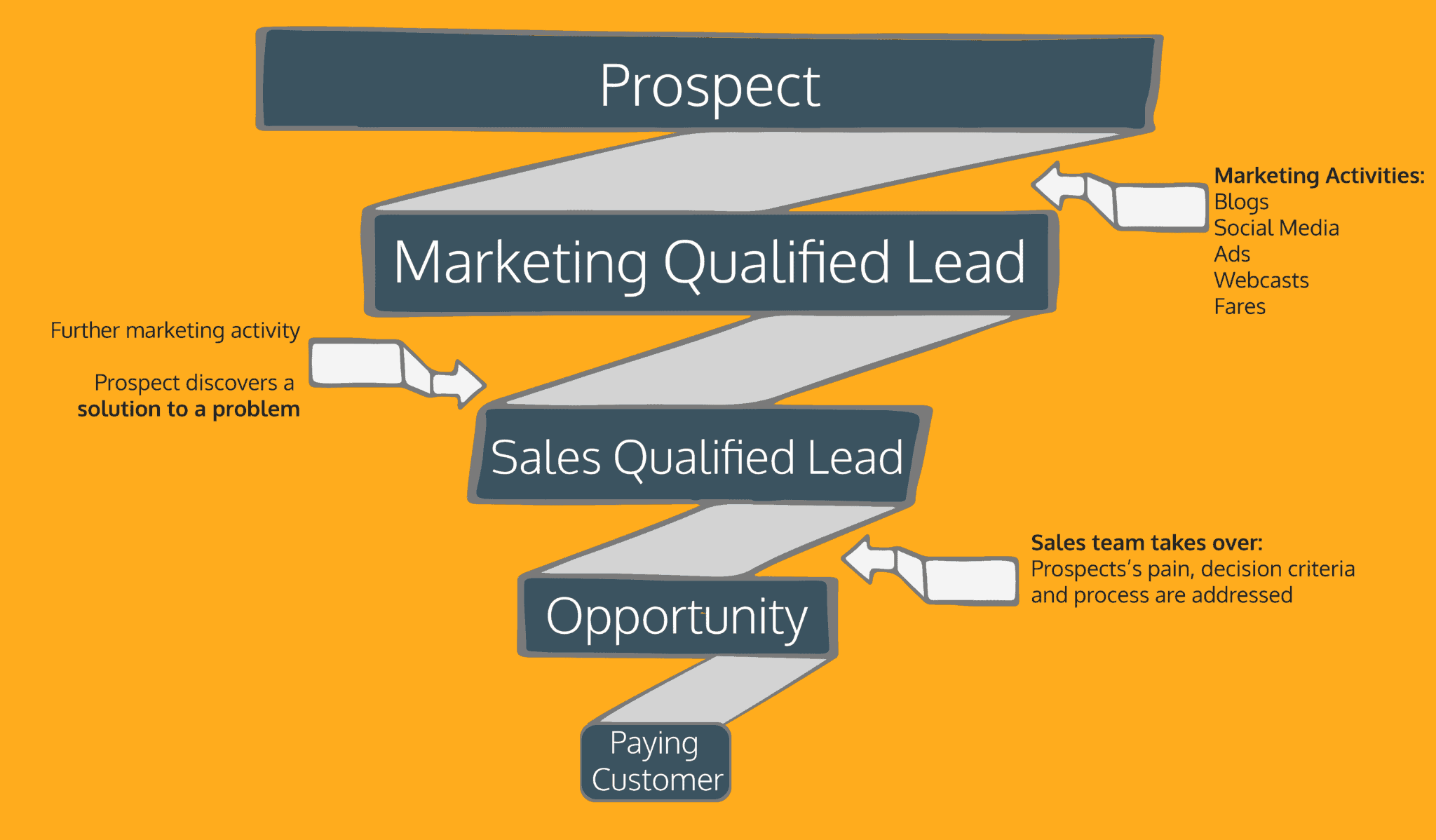
A marketing-qualified lead is a lead that has been vetted by the marketing team. This lead has met certain predetermined requirements and ranks higher as a potential customer compared to a regular prospect or website visitor. Behaviors such as filling up a form or downloading a guide on your site can be triggers that identify marketing qualified leads.
The main difference between Marketing Qualified Leads and Sales Qualified Leads is that SQLs have gone further down the sales funnel and are more refined than MQLs.
According to reports, about 33% of Marketing Qualified Leads convert to Sales Qualified Leads.
Why Marketing Qualified Lead is a crucial SaaS metric to track
Marketing Qualified Lead is crucial to track because it helps your marketing team understand the quality of your leads. Also, by tracking your MQL, you ascertain if you are targeting the right audience with your product and offers.
Here’s how you can calculate your Marketing Qualified Lead
You can track your MQL on a monthly, quarterly, or yearly basis. To calculate your monthly MQL, divide the total number of leads generated in a month by the total number of leads qualified by your marketing team. Multiply by 100 to get a percentage.
For example, if you got 1,000 leads in a month and 300 met the predetermined conditions set by your marketing team as qualified leads, your MQL for the month would be 30%.
EngageBay has advanced lead-scoring tools. You can try it to track your MQLs.
Ideas to increase your Marketing Qualified Leads
- Clearly define your SaaS marketing teams criteria for qualifying MQLs
- Double up on your lead nurturing efforts
- Produce unique content for leads based on the funnel stage
- Increase your content distribution channels
SaaS Marketing Automation Explained (+ Top 5 Tools to Consider)
5. Sales Qualified Lead (SQL)
A Sales Qualified Lead is a high-end lead. This lead has moved up the sales pipeline and is ready to purchase your product or service.
Why Sales Qualified Lead (SQL) is a crucial SaaS metric to track
All leads are not in the same category. Tracking your SQLs helps refine your sales process. So, you can channel your marketing strategies on premium clients with an intent to buy. This helps you save costs and act on time to close more deals.
How Sales Qualified Lead is calculated
You can track your SQLs using tools like Salesforce. Another important metric you can track is your MQL to SQL conversion rates using the formula in the image below.

For example, if you have 500 Marketing Qualified Leads and 75 are Sales Qualified. your MQL to SQL conversion is 15%.
The average conversion rate from Sales Qualified Lead to sales close is 20%.
Ideas to increase Sales-Qualified Leads
- Create content that triggers purchase intent
- Automate your lead scoring system and build different marketing segments based on them
- Create omnichannel touchpoints across different channels of your sales funnel
Read also: 17 Powerful Techniques to Generate B2B Sales Leads
6. Lead Velocity Rate (LVR)
Lead Velocity Rate is designed to track the percentage change in qualified leads from one month to another. Lead Velocity Rate is concerned with qualified leads, not just any lead. Qualified leads are prospects with an intent to buy based on previous behaviors.
Why Lead Velocity Rate is a crucial SaaS metric to track
Lead Velocity Rate is one of the most crucial metrics for your SaaS business. Because, unlike product-led businesses, SaaS businesses depend on recurring revenue for sustainability. LVR helps forecast sales and long-term potential for growth.
How to calculate your Lead Velocity Ratio
Lead Velocity Ratio is calculated by dividing the number of qualified leads from the previous month by the difference between the qualified leads of the current month and the qualified leads of the immediate past, multiplied by 100.

For instance, if you have 100 qualified leads from this month and 80 qualified leads the month before, your Lead Velocity Rate is 25%. Compare LVR from month to month to know how your SaaS business is doing. An increase in LVR month-on-month is a positive indicator of your SaaS business growth.
Quick ideas to increase your Lead Velocity Rate
- Activate more lead-generation channels
- Nurture leads at every stage of the sales funnel
- Optimize marketing personalized communication
Read also: What is Sales Velocity and How Do You Measure this Metric?
7. Monthly Recurring Revenue (MRR)
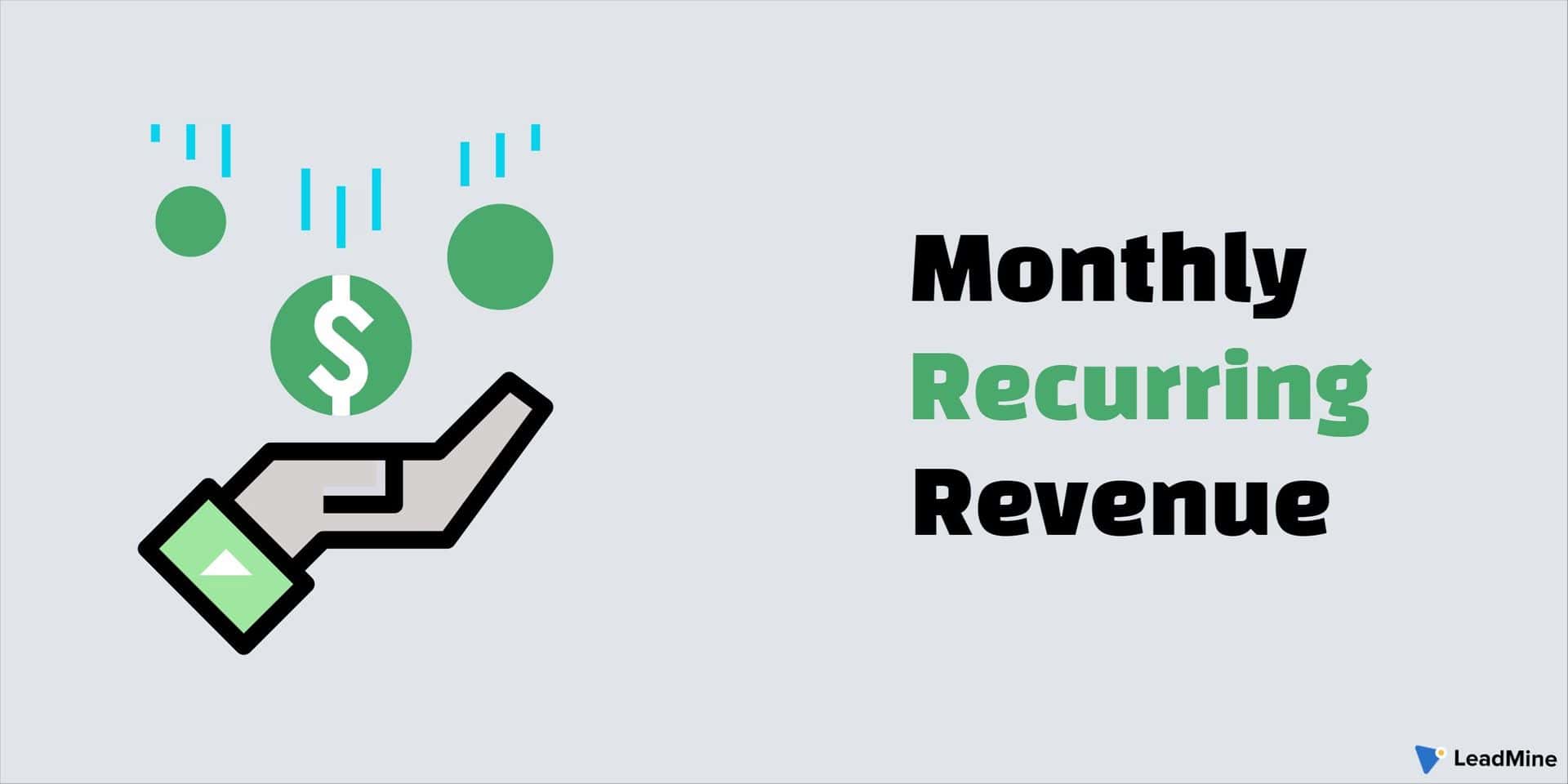
Monthly recurring revenue (MRR) is the monthly payable income your SaaS company receives from customers for subscription-based services.
Why Monthly Recurring Revenue is a crucial SaaS metric to track
MRR can help you forecast your recurring revenue more accurately. With this metric, you can make informed decisions around budgeting and scaling. Monthly Recurring Revenue is also helpful in tracking your SaaS business customer retention rate.
How to calculate your Monthly Recurring Revenue
MRR is calculated by multiplying the number of total subscribers in a given month by their average monthly revenue. For instance, if you have 5 subscribers with a $200 average monthly subscription revenue per customer, your MRR would be $1,000.
Ideas to scale your Monthly Recurring Revenue
- Split your pricing package into separate pricing tiers
- Offer incentives for recurring payments
- Upsell to get more revenue coming in
- Double up customer satisfaction to ensure better retention
Read also: Revenue vs Profit: A Simple Explanation of Income
8. LTV:CAC ratio
Customer Acquisition Cost is designed to track the cost of acquiring a new customer. The Customer Lifetime Value to Customer Acquisition Cost (LTV:CAC) ratio measures the lifetime value of a customer in relation to the cost of acquiring them.
Why LTV:CAC ratio is an important SaaS metric to track
Your LTV:CAC ratio gives insight into your business’s sustainability and profitability. For instance, if you’re spending more on customer acquisition than their lifetime value, your business might be at risk.
For scalability, your SaaS business LTV:CAC ratio typically should be greater than 3.
How LTV:CAC ratio is calculated

The Lifetime Value to Customer Acquisition Cost can be calculated by dividing your LTV by the CAC.
For example, a customer with an average lifetime value of $500 with a $100 acquisition cost, the LTV:CAC ratio would be 5:1.
Ideas to improve your CAC:LTV ratio
- Optimize your pricing strategy
- Target your marketing efforts at ideal customers
- Upsell and upcharge
10 Reasons Why SaaS Companies Invest in CRM Software
9. Revenue Churn
Revenue churn determines how much revenue your SaaS business loses due to customer cancellation or subscription downgrade. Businesses lose $1.6 trillion in revenue yearly due to customer churn. The lower your revenue churn, the better.
Why Revenue Churn is a crucial SaaS metric to track
Revenue churn is an important metric for SaaS companies because provides valuable insight into customer loyalty and helps identify areas where improvements need to be made.
How to calculate your Revenue Churn
Revenue churn = Churned ARR/total ARR at the beginning of the year x 100.
For example, say you had a total of $10,000 MRR at the beginning of the year. If you lose $1,000 from cancellations and downgrades, your annual revenue churn will be 10%.
The average annual revenue churn for SaaS businesses is 13.2%.
Ideas to reduce Revenue Churn
- Offer incentives or discounts to recurring customers
- Offer multi-tier pricing for different customer categories
- Improve your customer support strategy
- Use automated systems for billing processes and subscriptions to avoid errors
- Analyze customer feedback regularly to understand customers’ preferences and pain points
Read also: 5 Simple Ways To Increase Revenue With Little Money
10. Churn Rate
The churn rate in SaaS marketing revenue is the total percentage of customers who cancel or fail to renew their subscriptions. Lower churn rates indicate higher recurring revenue.
Why Churn Rate is a crucial SaaS metric to track
Churn rate is a critical metric for SaaS marketing revenue. It helps you understand how successful your marketing strategies are at retaining and keeping customers loyal.
In addition, by tracking the Churn Rate, SaaS marketers can identify patterns in customer behavior and take the steps necessary for increased customer retention. This could include offering promotions, discounts, or other incentives to ensure that customers remain with your SaaS company over a long period of time.
Research shows that a 5% improvement in retention rate increases profit anywhere from 25% to 95%. That’s why customer retention is crucial.
How to calculate your Churn Rate
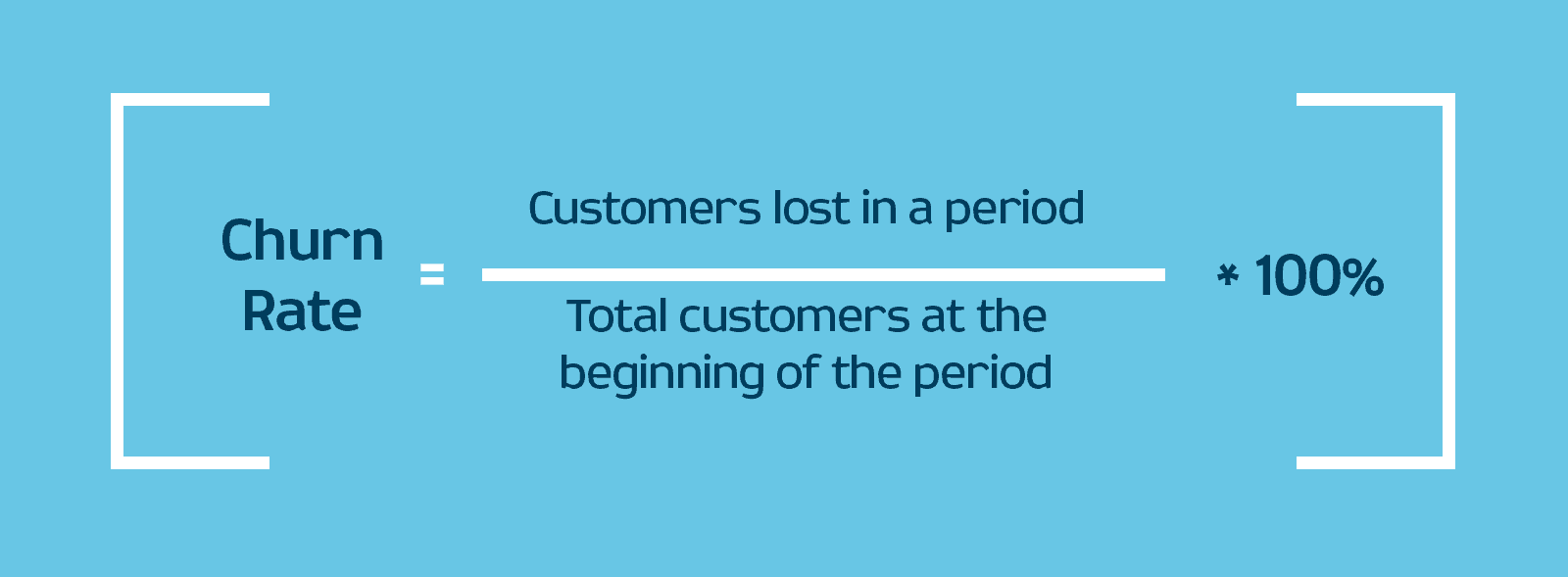
To calculate the churn rate, you must first identify how many customers have unsubscribed from your service. Then, divide that number by the total number of customers at the start.
For example, if 200 people signed up for your product in March and 20 people stopped using it by April, your monthly Churn Rate would be 10%. The average churn rate is 5%-7%.
Ideas to reduce Churn Rate
- Customize your customer support systems
- Implement loyalty programs
- Incentivize recurring customers
- Increase payment gateway period
- Offer discounts or irresistible offers to customers at risk of churning
- Use customer data to personalize communication across channels
Read also: The ONLY 8 Sales Performance Metrics That Matter
11. Annual Contract Value
Annual Contract Value is a SaaS marketing metric designed to show you the average revenue generated per year from one customer. It shows you the average value of a customer’s contract within a year. It works best for the Subscription-based SaaS revenue model.
Why Annual Contract Value is a crucial SaaS metric to track
Annual Contract Value (ACV) helps your SaaS business understand its revenue growth over time and forecast your expected income. In addition, ACV gives you data-driven insight into the financial health of your SaaS business.
How to calculate your Annual Contract Value
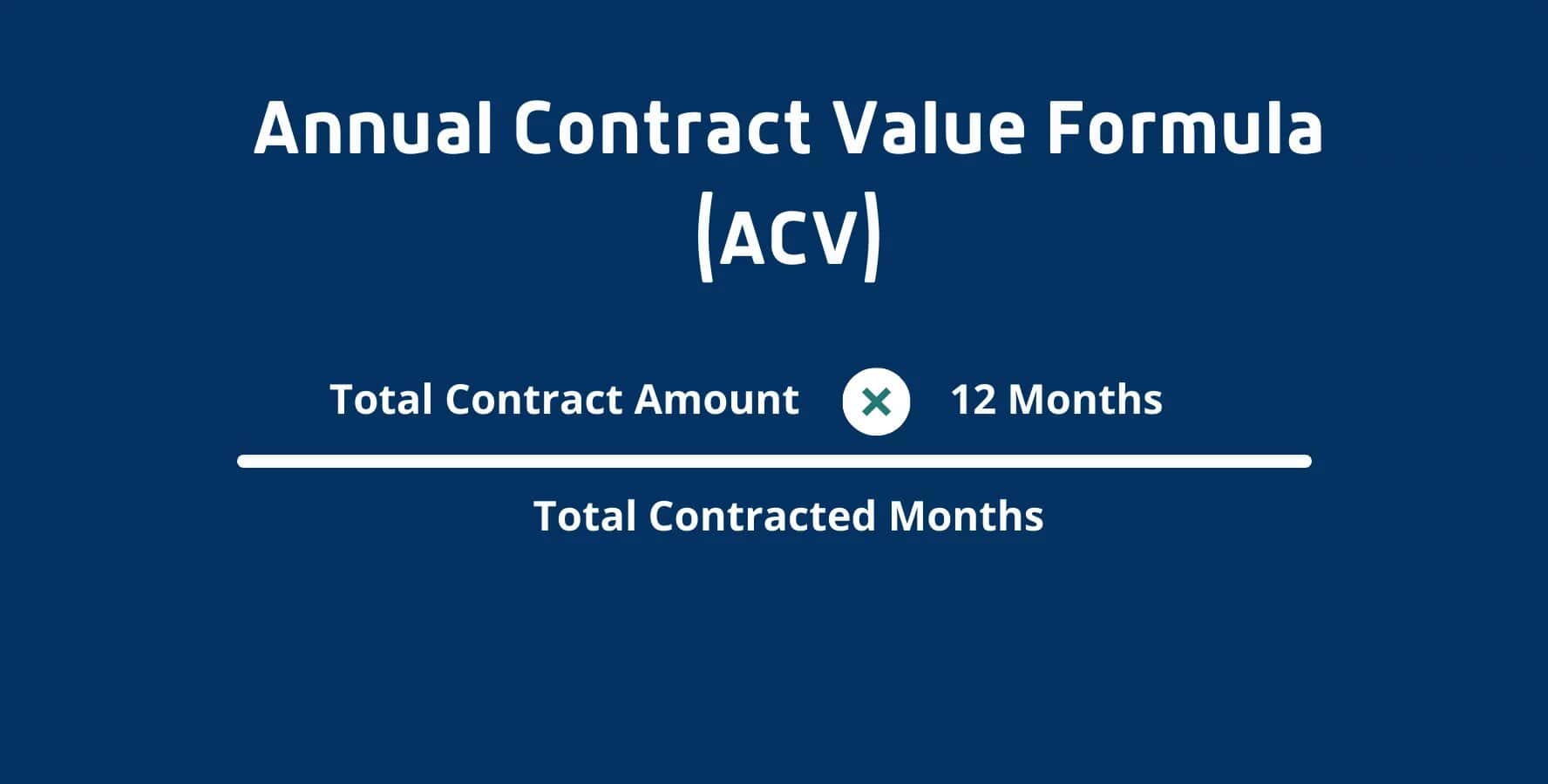
To calculate the annual contract revenue for a customer, multiply the total contract value and divide it by the total number of contracted months.
For example, if you sign a 4-year contract with a new client worth $10,000, the annual contract value would be $2,500/year.
Ideas to increase your Annual Contract Value
- Offer discounts for recurring payments to encourage customer loyalty
- Implement different pricing tiers and highlight their unique features and benefits
- Personalize your SaaS marketing onboarding process to drive user engagement and customer satisfaction
16 Key Sales KPIs for Small Businesses: Boost Your Revenue
12. Marketing Sourced Revenue (MSR)
Marketing-sourced revenue is the income generated from each marketing channel. It gives you insight into the revenue generated from your different marketing efforts, such as organic search, paid search, etc.
Why it’s essential to calculate your Marketing Sourced Revenue
Every business wants to maximize marketing Return on Investment (ROI) by investing in the most effective marketing channel. By tracking your MSR, you make informed decisions on the profitability of your different marketing channels.
How to calculate your Marketing Sourced Revenue
To calculate your Marketing Sourced Revenue, subtract the total marketing cost from the total sales revenue, or the the channel marketing cost from the channel sales revenue.
MSR = Sales revenue – Marketing cost
OR
MSR = Sales revenue from a channel – Marketing cost for that channel
Ideas to increase your Marketing Sourced Revenue
- Create marketing strategies tailored for each marketing channel
- Invest in SEO best practices
- Determine your revenue goals in advance and work from there
Read also: What Is Sales Volume? 8 Strategies to Boost Your Revenue
13. Unique Visitors
This is the number of new visitors who arrive at your site over a given period. It’s necessary to note that Unique Visitors aren’t the same as Visits.
For instance, a person visiting your site multiple times within a specific period will be counted as one visit under the unique visit metric.
Unique visits are obtained from identifiers like cookies or IP (Internet Protocol) addresses. They are counted as one visit even when one person visits your website or web page multiple times (within a set period).
Read also: What Are Net Sales? – Formulas, Calculations, And Examples
Why Unique Visitors is a crucial SaaS metric to track
Using tools like Google Analytics gives you an idea of where your unique visitors are coming from (organic search, social media, paid search, etc.).
This is important in measuring the performance of your different marketing channels.
How to track Unique Visitors
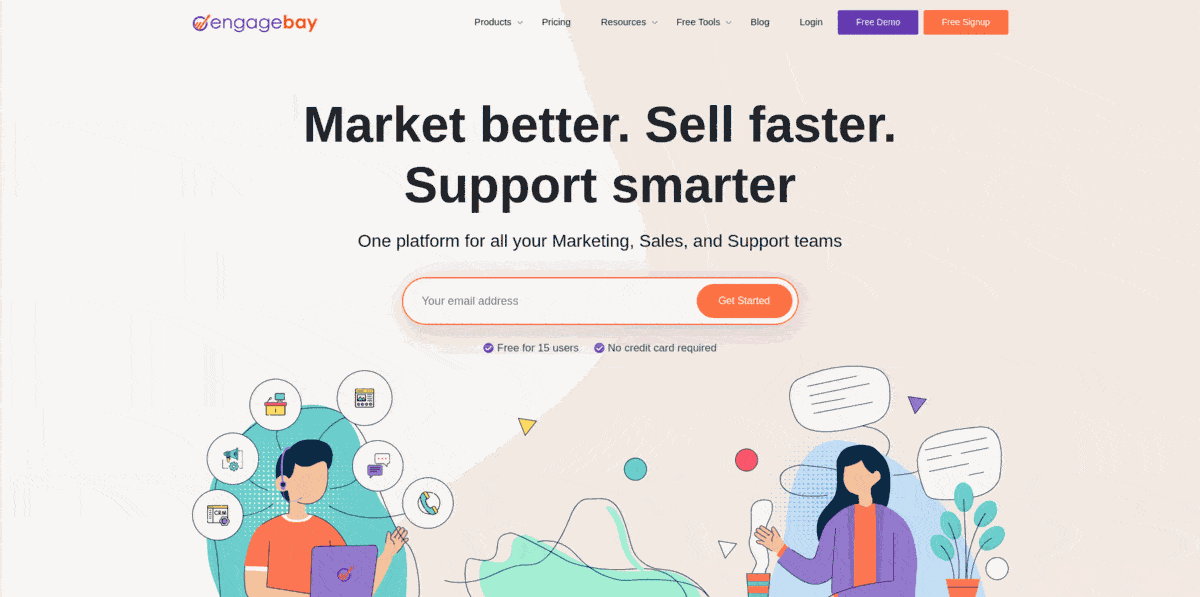
You can track Unique Visitors, see where they are coming from, and even track the average session duration using EngageBay’s web analytics tool. You can also use SalesPanel or Google Analytics — there are many analytics tools out there.
An increase in your unique visitors is a good sign that your marketing efforts are paying off. You should double down on what’s working.
A drop in unique visitors can be your hint to go back to the drawing board and revise your marketing campaigns.
Ideas to increase your Unique Visitors
- Implement SEO best practices
- Automate your marketing efforts
- Invest in paid search
- Optimize your landing page for a better user experience
14. Number of Free Trial Sign-ups
This is the total number of prospects who sign-up for your product’s free trial within a defined period. SaaS companies lose a lot of money due to churn. Therefore, free-trial signups are an important part of your marketing funnel.
Why the number of Free Trial Sign-ups is a crucial SaaS metric to track
Tracking your Free Trial sign-ups is a perfect way to measure how your overall marketing efforts are performing.
How to track the number of Free Trial Sign-ups
The best way to track this metric is to use CRM Analytics. CRM solutions usually offer tools to keep track of your total website visits, sign-ups, and more.
Tips to increase the number of Free Trial Sign-ups
- Double down on your content marketing efforts
- Invest in Organic and Paid search best practices
- Create a visually appealing landing page with a clear CTA
- Nurture your leads
- Offer free trials
15. Activations
Activations are designed to track customers who perform key actions on your SaaS product during a trial period. Users who perform these key actions are more likely to get value from your product and hence convert into paying customers.
Why Activations is a crucial SaaS metric to track
Activations have a direct impact on your revenue growth. An increase in Activations by 25% can lead to a 34% rise in your Monthly Recurring Revenue in 12 months. Therefore, it is an important SaaS metric to track.
How to calculate your Activation Rate
To calculate the activation rate, divide the total number of users who reached the activation milestone by the total number of users who initially signed up. Then multiply the result by 100.
For SaaS products, the average activation rate is 36%.
Ideas to increase Activations
- Personalize your onboarding process
- Create a friction-free sign-up flow
- Include user re-engagement in different stages of your SaaS marketing strategy
- Design product tour guides for new users
16. Lead-to-Customer Rate

Also known as lead conversion rate, this SaaS marketing metric is designed to measure the total number of qualified leads that convert into paying customers. The average Lead to Customer conversion rate is 7% for SaaS businesses, according to MarketingSherpa.
Why Lead-to-Customer Rate is a crucial SaaS metric to track
Lead-to-customer rate is a crucial metric that shows how effective your sales funnel is in converting leads into paying customers. With this, you get data-driven insight into how much your SaaS business can afford to spend on acquiring new leads.
EngageBay has one of the best lead-scoring tools for smooth conversions.
How to calculate Lead-to-Customer Rate
To calculate the Lead-to-Customer Rate, divide the number of new customers by the total number of leads. For example, if a marketing channel garners 300 leads and 30 convert into paying customers, your lead conversion rate would be 10%.
Ideas to improve your Lead-to-Customer Rate
- Nurture your leads through different marketing channels
- Leverage lead scoring models to close more deals
- Use a clear call-to-action in your offer
- Make irresistible limited-time offers
Read also: How to Create a Lead Conversion System for Your Company
17. Referral Traffic
This tracks the total number of people who come to your website through referred links from other sites rather than search.
Why Referral Traffic is a crucial SaaS marketing metric to track
There are several reasons you should be tracking your Referral Traffic. First, it shows you other ways potential prospects can hear about you. Also, referral traffic increases your reach and builds your website authority faster.
How to track your Referral Traffic
You can track Referral Traffic using tools like Google Analytics.
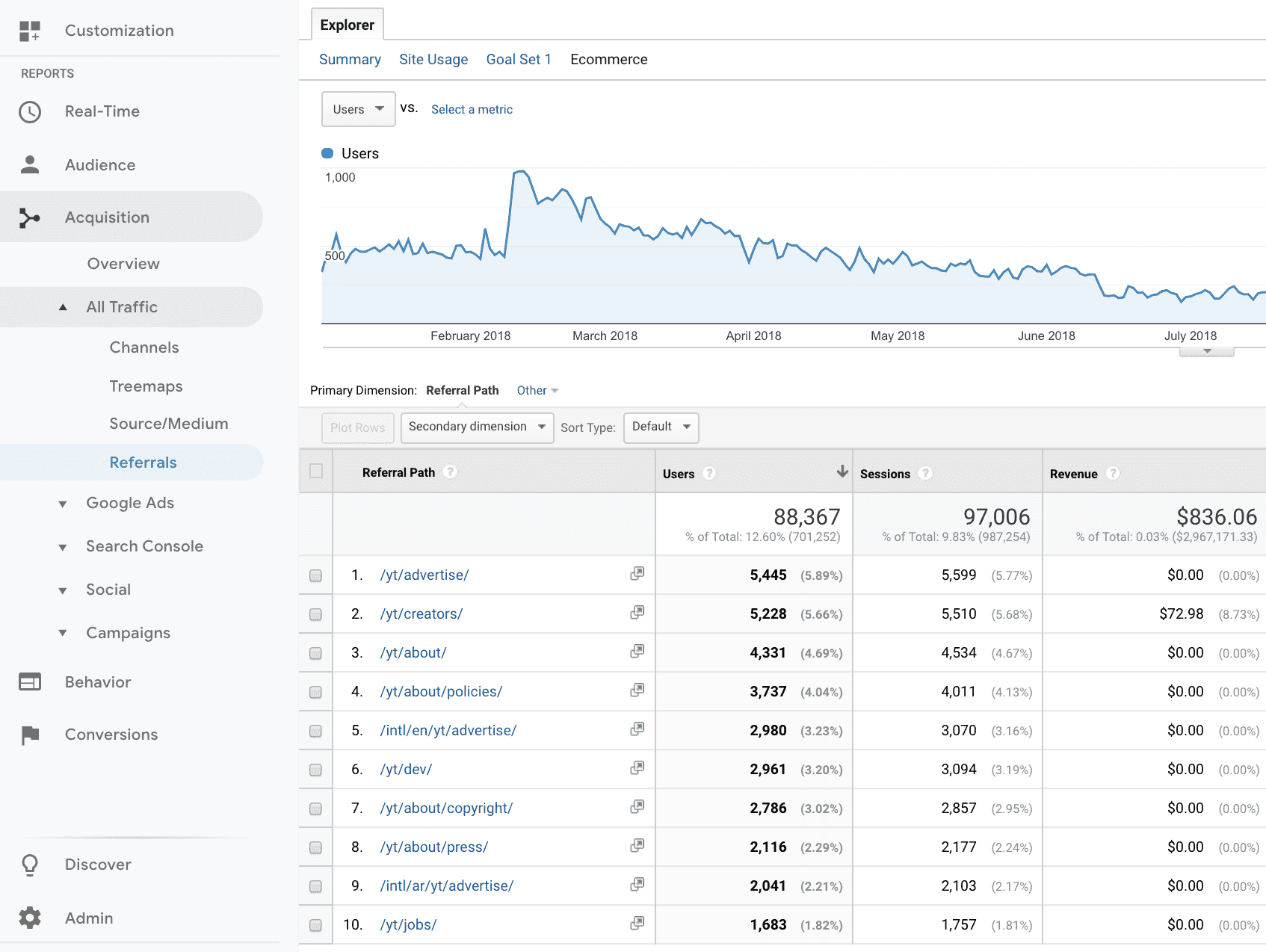
Ideas to increase Referral Traffic
- Partner with brands with the same target audience
- Invest in Influencer marketing
- Get listed on local directories
- Get your products reviewed on authority websites
18. Landing Page Conversion Rate
Landing Page Conversion Rate shows you the total number of people who completed the call-to-action on your landing page.
Why Landing Page Conversion Rate is a crucial SaaS marketing metric to track
Landing page conversion is a great way to get more leads for your business. By tracking this metric, you get a deeper insight into the effectiveness of your landing page and how you can optimize it to attract more leads.
How to calculate your Landing Page Conversion Rate
To calculate your Landing Page Conversion Rate, divide the number of total converts by the number of total visitors and multiply by 100. For example, if 200 people visit your landing page and 45 people convert by taking action, your conversion rate is 22.5%.
For SaaS businesses, 12% is a good conversion rate.
Ideas to scale your Landing Page Conversion Rate
- Optimize your landing page for better conversions
- Offer free trials to get visitors started
- Include videos in your landing page
- Offer irresistible lead magnets
Read also: 7 Landing Page Optimization Tools For Smooth Conversions
19. Signup-to-Paid Conversion (12-month period)
A free trial-to-paid conversion rate is simply the percentage of users who sign up for a paid account by the end of their trial period.
Why Signup-to-Paid Conversion is a crucial SaaS metric to track
How do you know if your marketing efforts are getting you not just sign-ups but customers who can pay? Exactly! You can know this by tracking your Signup-to-Paid Conversion rate.
How to calculate your Sign Up-to-Paid Conversion rate
Sign Up-to Paid Conversion Rate is calculated by dividing the total number of all signups. By the total number of new paying subscribers (within a 12-month period).
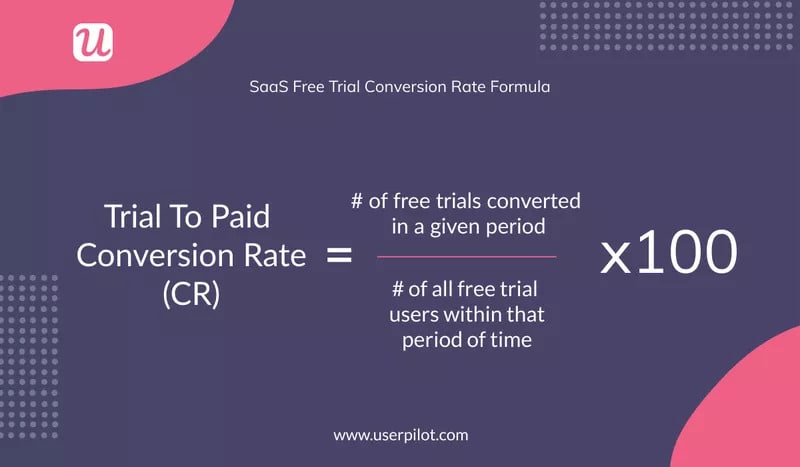
For example, if you had 1,000 (free) sign-ups in a year and 100 of them converted into paying clients, your conversion rate is 10%.
Ideas to scale Signup-to-Paid Conversion Rate
- Target your ideal customer segment with your marketing efforts
- Segment your audience by their behaviors and send personalized messages
- Have different pricing packages
- Optimize onboarding experiences
Read also: eCommerce Conversion Funnel in 5 Stages
20. Time Spent on Site
This metric tracks the time a visitor or user spends on your website.
Why Time Spent on Site is a crucial SaaS metric to track
Tracking the time spent on the site helps you know if people find your content helpful or useful or if they bounce. This can help you optimize your content strategy for better results.
How to track Time Spent on Site
The best way to track Time Spent on Site is by using tools like Google Analytics or EngageBay’s all-in-one powerful web analytical tool.
Ideas to increase Time Spent on Site
- Invest in UI/UX design to make your site more visually appealing
- Include high-quality images in your blog posts
- Add videos to get more attention from your audience
- Invest in quality content that can resonate with your audience
Read also: How to Get Started in Freelance Digital Marketing [Guide]
21. Bounce Rate
Bounce Rate is the percentage of visitors who leave your site immediately after arriving. Typically, if a visitor leaves your site after 10 seconds without engaging (no clicks), it is considered a bounce.
Why Bounce Rate is a crucial SaaS metric to track
To get the best Return On Investment for your content strategy, you need to be able to track how well users engage with your web pages. It may be time to tweak things up if you have a consistently high Bounce Rate.
About 41%-55% is the average bounce rate range for websites.
How to track your Bounce Rate
EngageBay’s powerful web analytics tool can help track your Bounce Rate. You can track your Bounce Rate using Google Analytics.
Ideas to reduce Bounce Rate
- Detect the reasons for a bounce on your website on improve on them
- Improve the readability of your texts
- Make your website more visually appealing
- Create valuable content that meets user intent
Read also: 14 Stunning eCommerce Landing Page Examples (+ Tips)
Wrapping Up
Waste no time on vanity metrics.
You can track the performance of your SaaS business with the proven marketing metrics we’ve explained in this blog post.
These metrics help decision-makers understand SaaS business performance across various departments: marketing, sales, customer success, and others (if any).
You can then make informed decisions to grow your SaaS business and increase revenue.
For marketing automation, sales CRM tools, and customer support, you can always trust EngageBay — the #1 alternative to HubSpot for small businesses.

